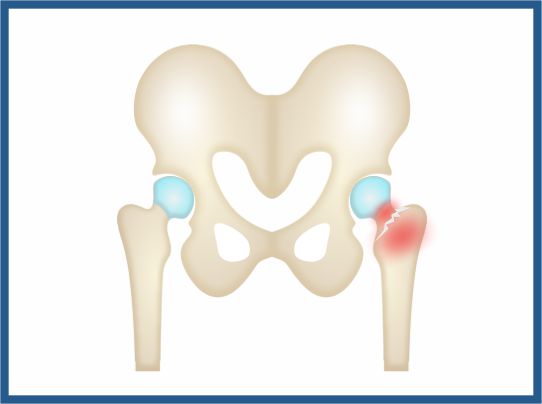Hip Fracture The hip is the joint between the upper end of the thighbone (femur) and its socket in the pelvis. When a hip fractures (breaks), the injury is always in the femur. The upper end of the femur can fracture in any one of three places:
The head of the femur The rounded surface at the very end of the bone that fits into a socket in the pelvis.
The neck of the femur A somewhat horizontal stretch of bone at the top of the femur that gives this bone the shape of an inverted "L."
Between or below the greater and lesser trochanters The femur naturally bends at the lower boundary of the hip, angling toward the knee. At this bend, two bony humps protrude along the outside edge of the femur. These ridges are the greater trochanter and lesser trochanter.
Type Of Hip Fracture - Doctors label fractures according to how far the bone has moved from its original position (its displacement). Fractures can be:
Nondisplaced, in which the bone has cracked but not separated
Minimally displaced, in which the bone has shifted slightly along or away from a break
Displaced, in which a part of the bone has become completely detached

Causes
- Falling from Height is the most common cause of Hip Fracture.
- Osteoporosis
- Other cause are Sports Injury, Trauma, Accident
Symptoms
- Pain
- Not being able to lift, move or rotate (turn) your leg
- Not being able to stand or put weight on your leg
- Bruising and swelling around your hip
- Injured leg appeared shorter than your other leg
- Injured leg turning outwards

